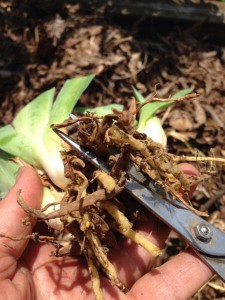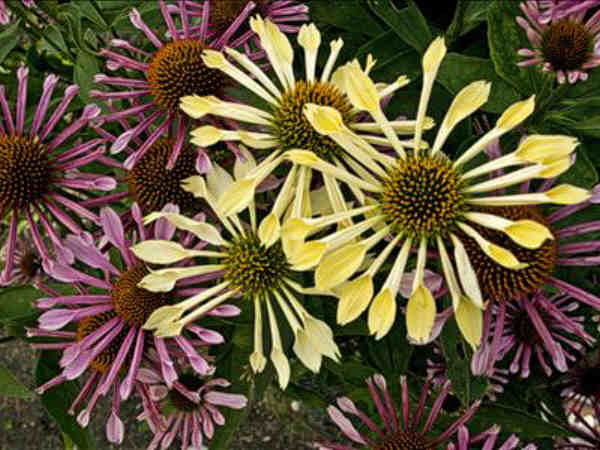As soon as it was warm enough, I was out in the garden digging around. I had a few hardy perennial seeds to put out, and decided last year to consolidate two or three beds into one big one so still had a few things to move. There was also a tall, floppy sedum that
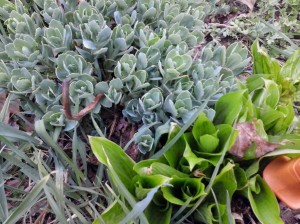
The sedum ended up on top of a hosta. Now I’ll spend the summer seeing which one dominates.
needed to go from the center of the garden to the outskirts.
Anyway, there was almost immediately a problem: not everything was up and I had exactly zero markers. Deciding to rely on memory alone (yes, yes, laugh if you must), I planted some asparagus, moved the sedum, scattered some rudbeckia seeds, built a grape arbor, and moved some raspberry plants.
When it became obvious that markers are a necessity in my garden, I started researching different ways to make them (because of course I don’t want to buy them — that would be money that could be spent on plants!) There are some great ideas out there, and I just happened to have a bag of old silverware.
Flattening spoons and stamping names of plants on them seemed like a lot of work, so I decided to just stick them utensils in the ground next to the plants as they came up. Forks marked the hostas, for example. Immediately, my husband started listing off all the reasons this was a terrible idea (mostly he thought the dogs would pull the silverware up and scatter it all over the yard and make mowing hazardous). I ignored him and proceeded to plant spoons and forks all over the garden.
A couple of hours later, I was walking around, staring at the ground, looking for anything new popping up (I spend hours doing this every spring), and noticed that a fork was missing. The inevitable “I told you so!” was not long in coming…but then I found the fork — buried all the way in the ground. Someone had stepped on it!
Clearly ONE piece of flatware would not do the trick. The next week I planted a small
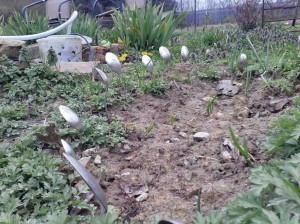
Spoon markers
patch of onions, and used spoons to outline it.
While this works great for the onions, it’s not really practical for each hosta, coneflower, peony, and other perennial in my garden. The search for effective, attractive, and free markers continues!
Belle’s suggestions:
Try knives and write on them with a paint pen or a bit less attractive but functional: plastic slats from window blinds and write on them with nail polish pens.


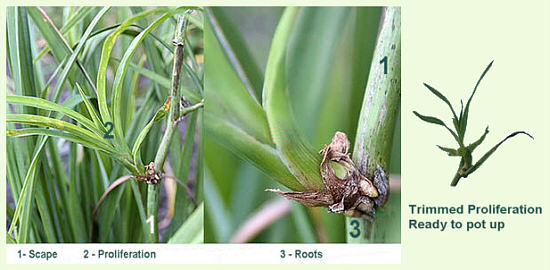
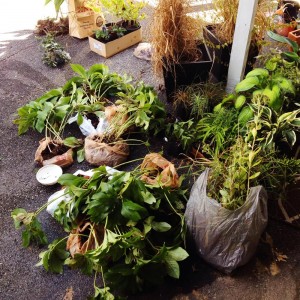
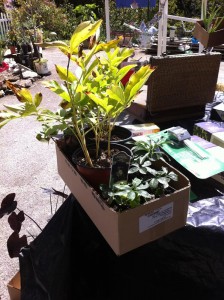


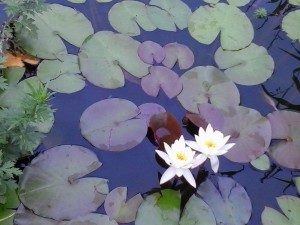


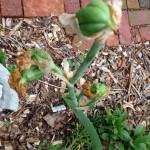
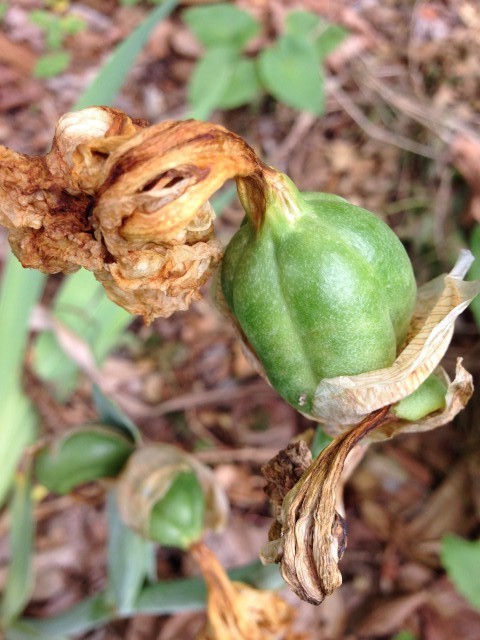
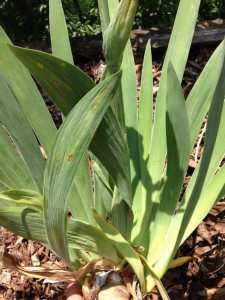 he rhizomes are so shallow makes them really easy to dig up. The easiest way is to use a fork — simply insert the fork near the edge of the rhizome and wiggle it around a little and it will pop up easily.
he rhizomes are so shallow makes them really easy to dig up. The easiest way is to use a fork — simply insert the fork near the edge of the rhizome and wiggle it around a little and it will pop up easily.